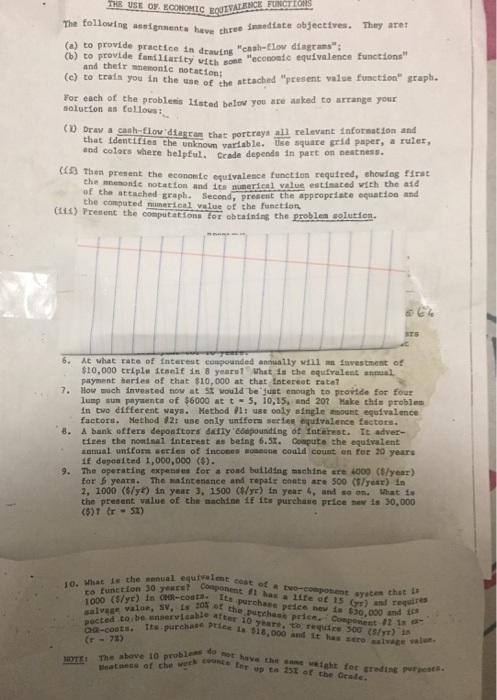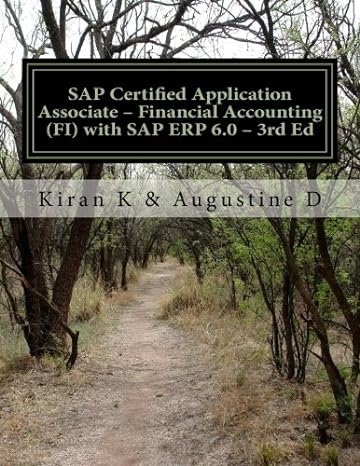Please solve questions 6 thru 10 please cleanly

The following assignments have three immediate objectives. They are: (a) to provide practice in drawing "cash-flow diagrams"; (b) to provide familiarity with some "economic equivalence functions" and their monic notation; (c) to train you in the use of the attached "present value function" graph. For each the problems 1isted below you are asked to arrange your solution as follows: (i) Draw a cash flow diagram that portrays all relevant information and that identifies the unknown variable. Use square grid paper, a ruler and colors where helpful. Grade depends in part on neatness. (ii) Then present the economic equivalence function required, showing first the of memonic notation and its numerical value estimated with the aid of the attached graph Second, present the appropriate equation and the computed numerical value of the function. (iii) Present the computations for obtaining the problem solution. At what rate of interest compounded annually will an investment of $10,000 triple itself in 8 years? What is the equivalent annual payment series of that $10,000 at that interest rate? How much invested now at 5% would be just enough to provide for four lump sum payments of $6000 at t = 5, 10, 15, and 20? Make this problem in two different ways. Method #1: use only single amount equivalence factors. Method #2: use only uniform series equivalence factors. A bank offers depositors daily compounding of interest. It advertizes the nominal interest as being 6.5%. Compute the equivalent annual uniform series of incomes someone could count on for 20 years if deposited 1,000,000 ($). The operating expenses for a road building machine are 4000 ($/year) for 6 years. The maintenance and repair costs are 500 ($/year) is 2, 1000 ($/yr) in year 3, 1500 ($/yr) in year 4, and so on. What is the present value of the machine if its purchase price new is 30,000 ($)? (r = 52) What is the annual equivalent cost of a two-component system that is to function 30 years? Component #1 has a life of 15 (yr) and requires 1000 ($/yr) in OMR-costs. Its purchase price new is $30,000 and its salvage value, SV, is 20% of the purchase price. Component #2 is expected to be unservicable after 10 years, to require 500 ($/yr) in OMR-costs. Its purchase price is $18,000 and it had rare salvage value.(r - 7%)








